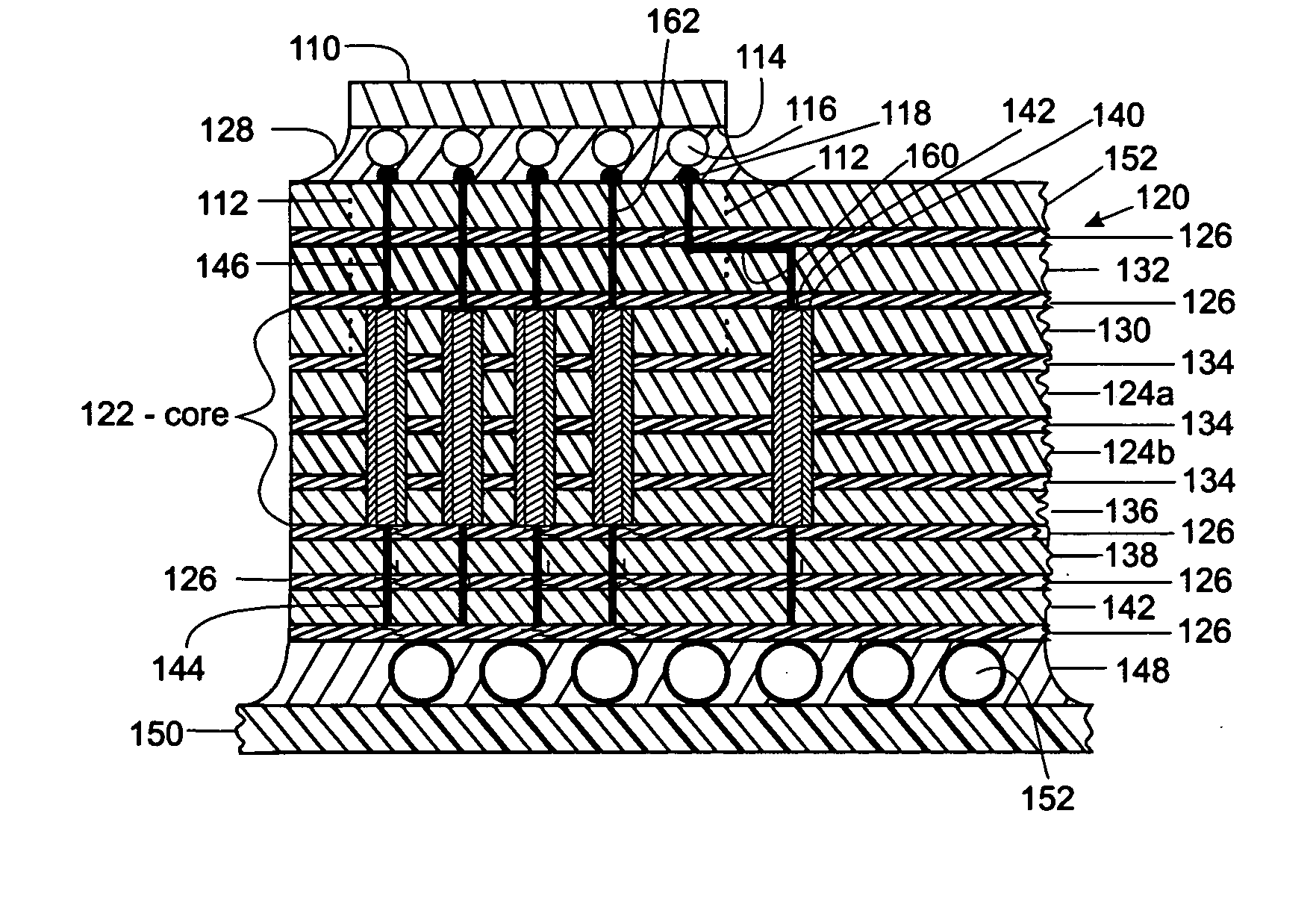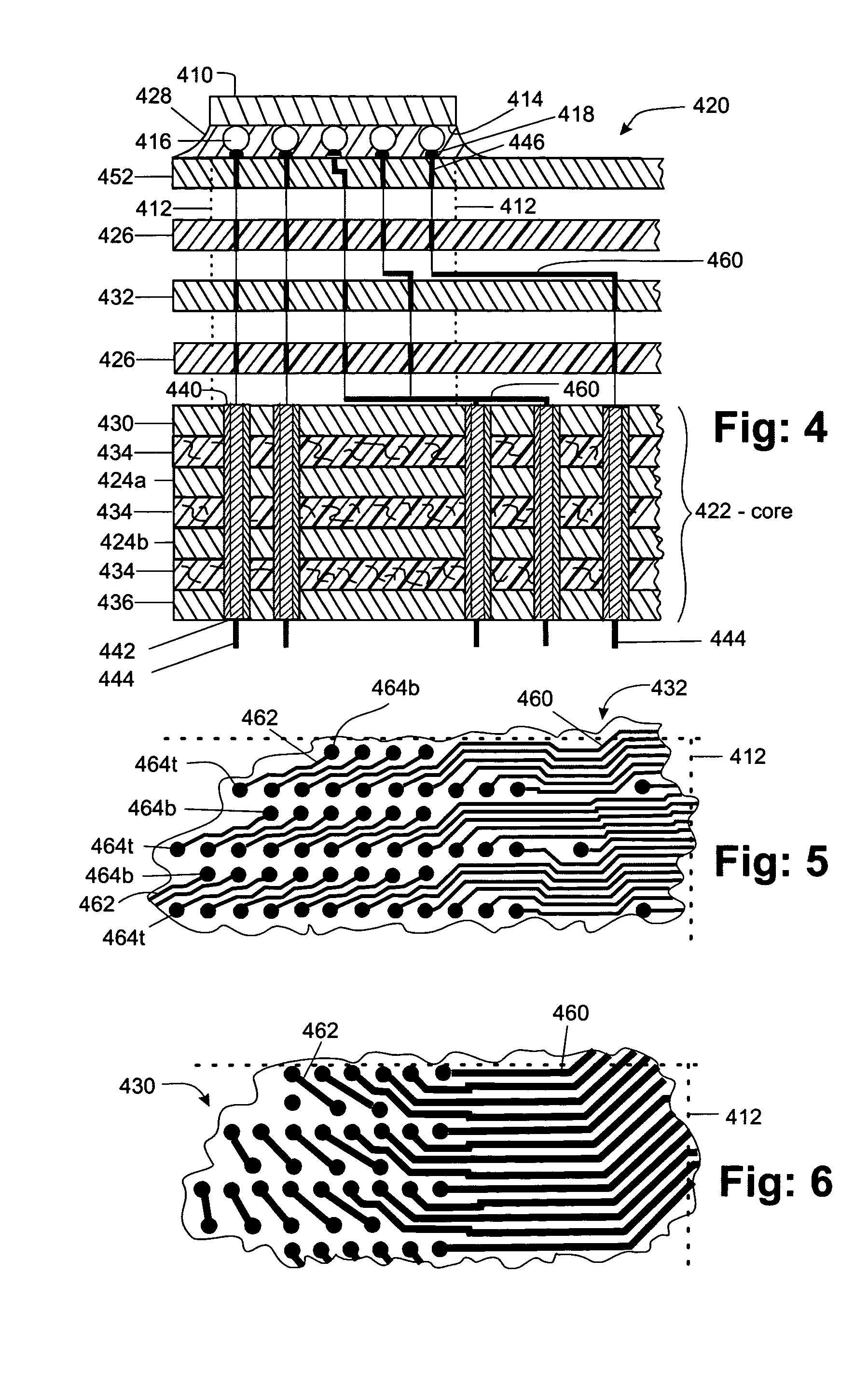High wireability microvia substrate
a microvia substrate and high wireability technology, applied in the direction of printed circuit aspects, printed circuit non-printed electric components, semiconductor/solid-state device details, etc., can solve the problems of increasing clock rates, compulsion to develop new manufacturing techniques, and complex integrated circuits with very high input/output (i/o) counts. achieve the effect of maintaining wireability density and reducing chip siz
- Summary
- Abstract
- Description
- Claims
- Application Information
AI Technical Summary
Benefits of technology
Problems solved by technology
Method used
Image
Examples
Embodiment Construction
[0021] A chip is typically made from a material such as silicon which exhibits semiconductive properties. The chip is mounted on a carrier which in turn is mounted on a printed wiring board. The carrier contains a large number of small conductive pathways, which for purposes of the present invention are referred to as vias passing through the core and microvias passing through the remainder of the carrier for tnansmitting signals between the chip and the printed wiring board. The carrier contains a core and one or more signal planes above and below the core. The core contains one or more voltage / ground planes as dictated by power consumption requirements, the planes separated from one another by a reinforced dielectric material. One conductive signal layer of copper forms the top of the core and is labeled as FC-1. A second conductive layer forms a second signal layer located above the core and is labeled as FC-2. If additional signal layers are used on the top of the core, they are...
PUM
 Login to View More
Login to View More Abstract
Description
Claims
Application Information
 Login to View More
Login to View More - R&D
- Intellectual Property
- Life Sciences
- Materials
- Tech Scout
- Unparalleled Data Quality
- Higher Quality Content
- 60% Fewer Hallucinations
Browse by: Latest US Patents, China's latest patents, Technical Efficacy Thesaurus, Application Domain, Technology Topic, Popular Technical Reports.
© 2025 PatSnap. All rights reserved.Legal|Privacy policy|Modern Slavery Act Transparency Statement|Sitemap|About US| Contact US: help@patsnap.com



